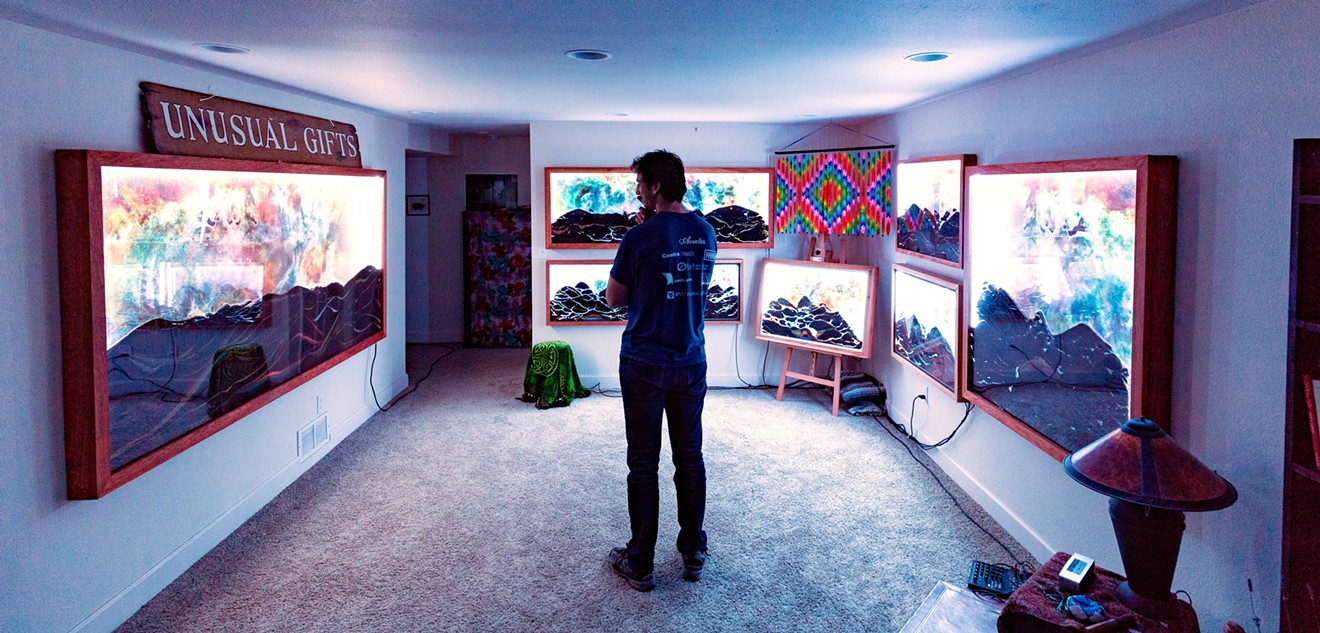Lemanski, who has degrees in aerospace engineering and mechanical engineering from West Virginia University, started making ant spaces as a personal project after returning from a series of bike journeys that crisscrossed the globe. Now that he's made 22 models, refining prototype after prototype, he's launched a Kickstarter that serves as a purchasing platform.
Ant Spaces are not Lemanski's first out-of-the-box undertaking. In 2013, at age 27, he left his job as an engineer at the Boulder Airport to bike from the Atlantic to the Pacific, starting in Portugal and ending, nine months later, in China. Before packing his panniers for the trip, he had never been out of the United States. But Lemanski wasn't done bike voyaging. Next, he biked from Fairbanks, Alaska, to Ushuaia, Argentina, the southernmost city in the world, sleeping in a glass pyramid at 17,000 feet in Bolivia along the way. And despite the change in location, the 467-day trip was much the same: His blog recounts welcoming and curious locals, night after night spent in a hammock, journaling, long miles passing in a near-meditative state. His final bike journey kicked off in New Zealand and took him through Africa to Tanzania, where he finally felt biked out. Having biked an estimated 38,000 miles and visited 41 countries, "returning to society was the fearful thing," Lemanski says.
In all his pedaling across the globe, the one possession Lemanksi remembers missing was the ant farm he'd constructed on a whim. In a diary entry from Siberia he rediscovered once he was back in the U.S., he'd written that he wanted to build "bigger better ant farms." Post-trip, returning to a nine-to-five job or even setting an alarm didn't make sense. After efforts to build a carbon-fiber bicycle proved unfruitful, Lemanski turned to building ant spaces. "I didn't build it for anyone else," Lemanski says, because after so much time spent alone, he'd lost touch with and interest in how others might view the art.

A close-up of one of Lemanski's ant spaces. For this background, he fed a hi-res image of the Carina Nebula into Google's DeepDream program, which imitates the neural network and visual cortex.
Courtesy Jacob Lemanski
Some things about these artistic ant habitats — like adding tiny plant seeds or setting the colors of the LEDs, which Lemanksi controls from a dial on a mobile app — are within his control. Others, like the tiny ant graveyard that he points out, or the ways in which the colored sand streaks as the insects tunnel, are not.
Asked how his living art has ties to his bike odysseys, Lemanski explains that in both endeavors, he was drawn to push himself to the limit. For biking, it was an exercise in extreme endurance. The ant spaces, meanwhile, have grown in magnitude; the largest one Lemanski has made measures eight feet across.
In his "highest vision," Lemanski says, he dreams of ant spaces becoming as prevalent as fish tanks, a fixture in homes across America. He mentions future hopes of his largest piece taking residence in a museum or owning a social-consumption pot cafe lined with ever-changing ant spaces. Now, he says, "it's time to find out if I'm just a crazy guy with a weird hobby," or if the Kickstarter will show that his work resonates with others.
You can see one of Lemanski's ant spaces in the virtual-reality arcade and maker space Reality Garage, 1320 Pearl Street, #101, in Boulder. The project will also be on temporary display from 6 to 9 p.m. on Friday, September 1, at Hoi Polloi Workshop, 4939 North Broadway in Boulder. And to get an ant space of your own, you can contribute to the Kickstarter, which ends September 7 and has a goal of $10,000.













